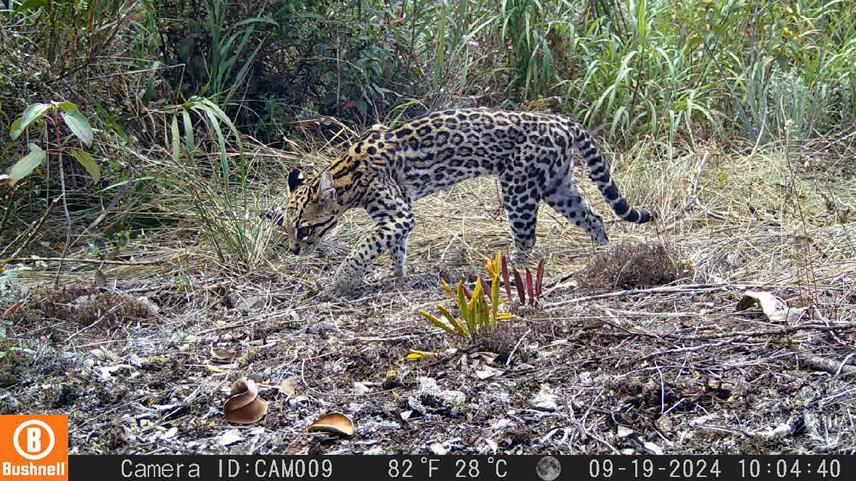Bruno Lucas Fontes dos Santos
Protected areas are essential for biodiversity conservation, but many face anthropogenic pressures that particularly affect mammals due to their sensitivity to environmental changes. The Chapada Diamantina National Park is a strategic area for both Brazilian and global biodiversity conservation. Located in an ecotone with high environmental variability — including savannas typical of the Caatinga and Cerrado biomes, as well as forests associated with the Atlantic Forest — the park faces increasing threats such as unregulated tourism, agriculture, urban expansion, and land use changes.

Camera trap record of an ocelot (Leopardus pardalis) in Chapada Diamantina National Park. © Bruno Fontes.
This research aims to investigate how human activities and landscape features influence the distribution and diversity of medium- and large-sized mammals within Chapada Diamantina National Park. To achieve this, we are conducting the first camera trap survey targeting these species. By combining species records with environmental and landscape data, we will identify priority areas for conservation and better understand ecological patterns and processes affecting local fauna. Some species are threatened with extinction, such as the yellow-breasted capuchin (Sapajus xanthosternos), classified as Critically Endangered by the IUCN. The park may also harbor emblematic species such as the jaguar (Panthera onca), the largest predator in the Americas and an important indicator of ecosystem integrity.
Understanding the factors that affect these mammals is essential to support management decisions, guide land use planning, and allocate resources toward more effective conservation strategies. This knowledge can also help surrounding cities implement landscape improvements that reduce human impacts on the ecosystem.
Community engagement and raising awareness among local residents and visitors are key pillars of conservation. Therefore, we will carry out workshops, digital campaigns, and distribute an illustrated educational booklet to share project results and highlight the role of mammals in maintaining ecosystem balance. Working in collaboration with society, our findings will support territorial planning and strengthen participatory conservation in one of Brazil’s most important protected areas.
By integrating scientific research, environmental planning, and social participation, this initiative will contribute to long-term biodiversity conservation and the sustainable development of the region.